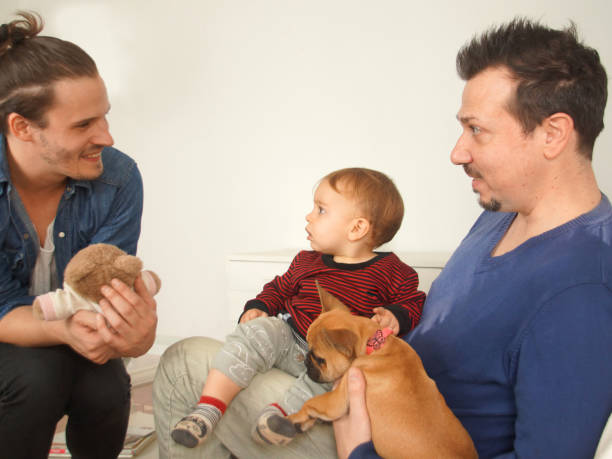Adoption Process Guide
Adoption Process Tips for a Smooth and Successful Transition to Pet Parenthood
Adopting a pet is a rewarding experience that brings joy and companionship into your life. However, ensuring a smooth and successful transition involves careful planning and preparation. Here are essential tips to guide you through the adoption process, making the transition to pet parenthood as seamless and fulfilling as possible.
1. Assess Your Readiness for Pet Ownership
Self-Evaluation: Consider your lifestyle, schedule, and financial situation. Evaluate whether you can commit time, energy, and resources to caring for a pet.
Family Consideration: Discuss pet adoption with all household members to ensure everyone is on board and prepared for the responsibilities involved.
Key Tips:
- Time Commitment: Pets require daily care, exercise, and attention.
- Financial Responsibility: Budget for food, veterinary care, grooming, and other expenses.
2. Research and Choose the Right Pet
Pet Type and Breed: Research different types of pets and breeds to find one that fits your lifestyle and preferences. Consider factors like size, activity level, and grooming needs.
Rescue Organizations: Look into local shelters, rescue groups, and breed-specific rescues. Each organization may have different processes and resources.
Key Tips:
- Compatibility: Choose a pet whose needs match your lifestyle.
- Adoption Profiles: Review pet profiles and visit shelters to meet potential pets.
3. Prepare Your Home for a New Pet
Pet-Proofing: Make your home safe by removing hazardous items, securing electrical cords, and ensuring pets can’t access dangerous areas.
Essential Supplies: Gather necessary supplies such as food and water bowls, a bed, toys, a litter box (for cats), and grooming tools.
Key Tips:
- Safe Space: Create a designated area where your new pet can feel secure and comfortable.
- Training Tools: Prepare training aids and resources for basic training.
4. Complete the Adoption Application
Application Form: Fill out the adoption application accurately, providing information about your home environment, pet experience, and lifestyle.
Interviews and Home Visits: Be prepared for interviews or home visits by adoption agencies. They assess your suitability as a pet owner and ensure a good match.
Key Tips:
- Honesty: Provide truthful information about your living situation and pet experience.
- Patience: The adoption process can take time, so be patient and prepared for follow-up questions.
5. Meet and Bond with Potential Pets
Initial Meeting: Visit the shelter or rescue organization to meet pets that match your criteria. Spend time interacting with them to gauge compatibility.
Behavior Observation: Observe the pet’s behavior and temperament to ensure it aligns with what you’re looking for in a companion.
Key Tips:
- Multiple Visits: Consider visiting more than once to build a bond and see how the pet adjusts to your presence.
- Family Interaction: Include all family members in the meeting to assess how the pet interacts with everyone.
6. Finalize the Adoption and Prepare for Transition
Adoption Fee: Pay the adoption fee, which often covers vaccinations, spaying/neutering, and sometimes microchipping.
Transition Plan: Prepare for the pet’s arrival by ensuring a smooth transition. Keep the environment calm and avoid overwhelming the pet with too many changes at once.
Key Tips:
- Medical Records: Obtain any medical records or information about the pet’s health and history.
- Comfort Items: Bring familiar items from the shelter, like a blanket or toy, to help the pet adjust.
7. Introduce the Pet to Their New Home
Gradual Introduction: Introduce your new pet to their new home gradually. Allow them to explore one room at a time before giving them access to the entire house.
Routine Establishment: Establish a routine for feeding, exercise, and training to help your pet adjust to their new environment.
Key Tips:
- Positive Reinforcement: Use treats and praise to encourage positive behavior and help your pet feel secure.
- Consistency: Maintain a consistent schedule to provide stability and comfort.
8. Provide Ongoing Care and Training
Veterinary Care: Schedule a veterinary check-up shortly after adoption to ensure your pet’s health and receive any necessary vaccinations or treatments.
Training and Socialization: Continue training and socializing your pet to help them adapt and learn good behavior. Use positive reinforcement techniques for effective results.
Key Tips:
- Regular Check-Ups: Keep up with regular veterinary visits and vaccinations.
- Behavioral Support: Seek professional help if you encounter behavioral issues or challenges.
9. Build a Strong Bond
Quality Time: Spend quality time bonding with your pet through play, training, and affection. Building a strong bond helps ensure a happy and healthy relationship.
Affection and Attention: Show your pet love and attention to reinforce positive behavior and strengthen your connection.
Key Tips:
- Interactive Activities: Engage in activities that your pet enjoys, such as walks, playtime, or cuddling.
- Positive Interaction: Use positive interactions to reinforce good behavior and deepen your bond.
10. Stay Informed and Seek Support
Pet Resources: Stay informed about pet care, training, and health by accessing resources such as books, online forums, and pet care websites.
Community Support: Connect with local pet communities or support groups for advice and support from other pet owners.
Key Tips:
- Educational Resources: Utilize educational materials to enhance your knowledge and skills.
- Pet Community: Engage with other pet owners for shared experiences and advice.
Conclusion
Successfully navigating the pet adoption process involves careful planning, preparation, and a commitment to providing a loving home. By assessing your readiness, researching the right pet, preparing your home, and following through with ongoing care and training, you can ensure a smooth transition and build a strong, rewarding relationship with your new furry friend. Remember that patience, consistency, and affection are key to a successful and fulfilling pet ownership experience.


